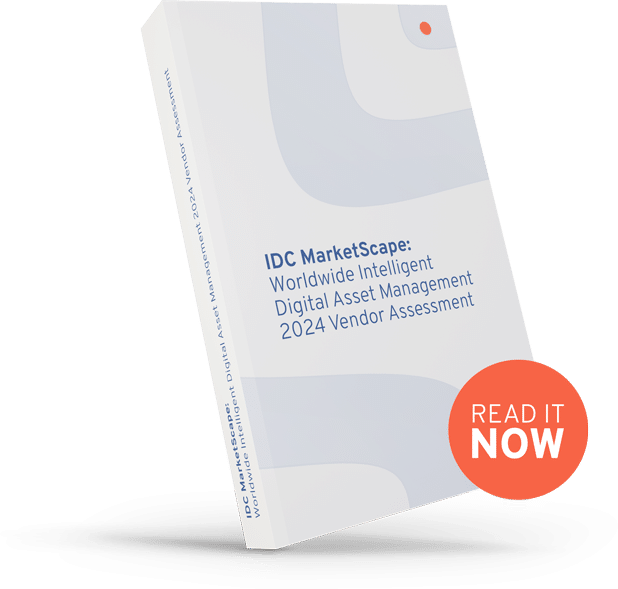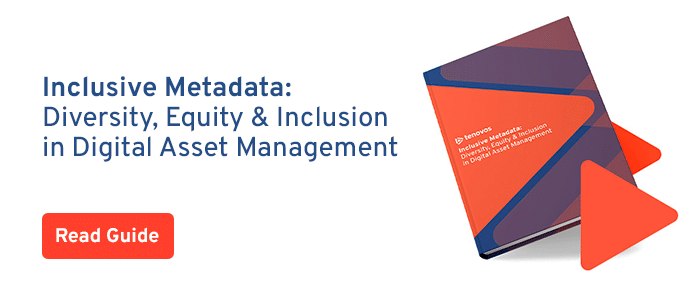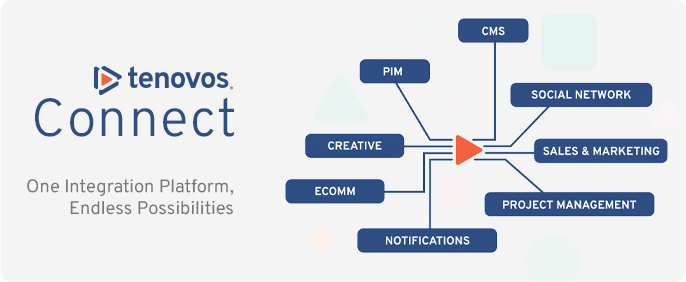
Digital rights management (DRM) is the processes, systems and technologies through which brands control access to their digital assets, and it’s one of the more important factors creatives need to consider when they’re building new content.
The top 150 global licensors accounted for over $260 billion in licensed goods sold at retail in 2021, including companies like Disney, Mattel and Warner Bros. It goes without saying these companies – along with countless other licensors who may sell rights to their assets for non-retail purposes – spend a lot of time and resources protecting their valuable brand assets. And if your company has purchased rights to any of these assets, it’s crucial your creative teams have visibility into how they’re allowed to be used.
Digital Rights Management and Your Creative Process
Often teams will have thousands of digital assets stored in their digital asset management (DAM) system, and they’ll pull from those assets to create new content.
Maybe these are music files for a video, or images from a photoshoot – really whatever is needed. Shouldn’t it be as easy as finding these assets in the DAM, choosing the ones you like, and using them to create the content?
It should be, yes. But it normally isn’t.
That’s because today’s creative processes often involve manually searching for assets. Even when an asset is covered by a license agreement, it doesn’t always mean the creative team actually knows or sees that. This creates significant risk that the wrong asset will be used, or an asset will be used inappropriately leading to legal action.
If it can happen to Monster Energy, it can happen to you. Back in 2016 the company paid $1.7 million in damages for copyright infringement when they used music by The Beastie Boys in a promotional video – music they didn’t have the rights to use.
To try and mitigate these risks, companies will put cumbersome manual processes and reviews in place to ensure digital rights are respected, but these only create delays in the creative process, and don’t really solve the visibility issues creatives face when it comes to these licensing agreements.
Digital rights management should be a direct part of the creative process from the beginning, and not tagged on midway through. Does that mean, then, that companies should spend hundreds of thousands of dollars on a new DRM system to control access to content? Or is there a better way?
Digital Rights Management and Your DAM
Digital rights management systems come in different forms. Some proactively protect content and assets, like video game DRMs that restrict content access to only one linked account. Others can block certain activities with content, like copying images from websites, or place digital water marks on non-licensed content like pirated movies, songs and pictures.
License agreements are a form of DRM as well, as they, through legal means, protect the use of digital assets.
It’s important to note that even if you’ve purchased rights to an asset – and therefore have access through the licensor’s proactive DRM system – you still must adhere to the terms of the license agreement.
So then, how do you do that? These licensed assets are in your DAM and ready to use, but you need to know what’s available to you for the use case you have, or for the region in which you want to publish them.
Modern DAM platforms like Tenovos have built-in digital rights management features, and if you’re looking for a DAM today, this is something you absolutely should make sure is available in the system.
Why Built-In Digital Rights Management Is Vital in DAM
Apart from the obvious productivity gains of overcoming manual processes, your creative team is going to gain much-needed insights into how the assets they’ve purchased are actually being used, and where to spend dollars in the future. First, let’s look at some key functionalities of DRM in DAM, and then we’ll break down why that’s so important.
Digital rights management features in DAM should include:
- The ability to ingest content in bulk and automate the application of rights restrictions, based on existing license agreements
- Filter and search for content based on licensing permissions (ie. search for available content in a specific region, or for a specific timeframe)
- List all assets that exist in the DAM under any given license agreement, or entity/licensor
- System notifications for any licenses that are about to expire
- Restricting access to assets with an expired license
- Automate workflows for asset download requests if legal/other reviews are still required
Boosting creative productivity
As mentioned, one of the best outcomes of built-in rights management within your DAM is the productivity boost it will give your creative team.
Imagine knowing what you’re creating content for – region or use case – and being able to quickly filter assets to what’s permitted based on those specifications? Or knowing you want to use a specific license, like a Marvel hero image, and being able to immediately pull up all the relevant assets to that agreement? Right away, you’ve saved time in the DAM.
Now that you have the assets you want to use, you no longer need to manually send those for a lengthy review. If the license agreement is straightforward, you can trust the DAM to only give you access to approved content. If it’s more complex, you can trigger a review workflow that automates the process for you, notifies the reviewer, and sends back their response all within the system. In a world where speed to market is so vital to success, this productivity boost is a great advantage when working with licensed assets.
Reducing compliance risks
The last thing you want is a lawsuit to ruin your brand image and cost you millions. You also don’t want the embarrassment of having to pull products from shelves or cancel marketing campaigns because of a misused asset.
Built-in digital rights management helps to protect your organization by limiting access to only approved assets, based on the terms of use for the content. If you’ve only published distribution rights for Europe but your campaign is based in North America, those assets won’t be available to the creative team in the first place. That’s a powerful tool for controlling asset use and protecting your company from unwanted risk.
Measuring return on investment
As you saw at the beginning of this article, the industry for licensing is in the billions of dollars. It’s huge, and companies are spending a lot of money to buy rights to these assets for their own marketing and product purposes.
Great, but how do you know if the price you paid was worth it? Today, it’s again a manual process. You may have purchased rights to a hundred assets, but only used a handful. You’d have no way of knowing that, unless the rights are managed from within your DAM.
With built-in digital rights management, your DAM will tell you all the assets you own under a given license agreement. You can then easily see how many of those you used, how they were used, and how that content performed for your business. When it comes time to renew licenses for those assets, you’ll have a much better idea of how to spend your money if you know what worked for you, and what wasn’t worth the investment.
Digital Asset Management & DRM
Your DAM is a crucial part of your enterprise tech stack. Digital rights management can’t be overlooked in terms of its importance to your business, and yet many organizations are still managing this in a manual way.
Tenovos has built-in rights management features so your team can work more efficiently, and with a clear understanding of the ROI you’re getting from your license agreements. Learn more about rights management tools.



